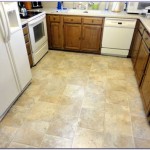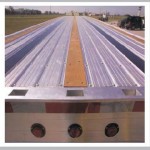Elm Flooring: A Superior Choice for Elmwood Park, IL Homes
Elm flooring represents a compelling option for homeowners in Elmwood Park, IL, seeking a durable, visually appealing, and sustainable flooring solution. This article explores the characteristics of elm flooring, its advantages and disadvantages, considerations for installation and maintenance, and its suitability for the unique climate and architectural styles prevalent in Elmwood Park.
Elmwood Park, with its diverse housing stock ranging from classic bungalows to modern constructions, benefits from flooring options that offer both aesthetic versatility and long-term performance. Elm flooring, with its distinctive grain patterns and inherent strength, fulfills these requirements, enhancing the value and appeal of properties within the community.
Elm, a hardwood species found across North America and Europe, has historically been utilized in furniture making, construction, and various other applications requiring robust and aesthetically pleasing materials. Its application in flooring is gaining popularity due to its unique combination of hardness, grain variation, and relative affordability compared to some other premium hardwood options.
Understanding Elm Wood and Its Characteristics
Elm wood is characterized by its interlocking grain pattern, which contributes significantly to its strength and stability. This interlocking grain makes it less prone to warping and splitting compared to woods with straighter grain patterns. This characteristic is particularly advantageous in regions like Elmwood Park, where seasonal changes in humidity can pose challenges to wood flooring.
The heartwood of elm typically presents a reddish-brown hue, while the sapwood is lighter in color. This natural variation in color creates visually interesting flooring, often showcasing a range of shades within the same installation. The grain pattern itself is typically pronounced and can range from relatively straight to highly figured, adding character and visual depth to the floor.
Elm flooring is generally considered a moderately hard wood, rated around 830 on the Janka hardness scale. While not as hard as some other hardwoods like Brazilian Cherry or Hickory, it is sufficiently durable for residential applications and can withstand moderate levels of foot traffic without excessive wear and tear. This makes it a practical choice for living rooms, dining rooms, bedrooms, and even kitchens with appropriate sealing and maintenance.
The density of elm wood contributes to its durability and resistance to denting and scratching. While it is still susceptible to damage from sharp objects or heavy impacts, it performs admirably under normal household conditions. Regular maintenance, including sweeping, vacuuming, and periodic refinishing, can further extend the lifespan and maintain the appearance of elm flooring.
Elm wood is also known for its ability to accept stains and finishes readily. This allows homeowners to customize the color and sheen of their elm flooring to match their existing décor or achieve a desired aesthetic. From light, natural tones to dark, rich hues, elm flooring can be tailored to complement a wide range of interior design styles.
Advantages of Choosing Elm Flooring in Elmwood Park
Several advantages make elm flooring a compelling choice for homeowners in Elmwood Park. Its durability, aesthetic appeal, and relative affordability compared to some other premium hardwood options are significant factors to consider. Furthermore, its sustainability and availability contribute to its appeal as an environmentally conscious flooring solution.
The durability of elm flooring is a major advantage, particularly in areas with high foot traffic. Its interlocking grain pattern and moderate hardness provide resistance to wear and tear, ensuring that the floor maintains its appearance for many years with proper care. This durability translates to long-term value for homeowners, reducing the need for frequent replacements or repairs.
The aesthetic appeal of elm flooring is another key advantage. Its distinctive grain patterns and natural color variations create a unique and visually interesting floor that adds character and warmth to any room. The ability to stain and finish elm flooring allows homeowners to customize the look to match their personal preferences and complement their existing décor.
Compared to some other premium hardwoods like Brazilian Cherry, Walnut, or Maple, elm flooring is often more affordable. This makes it an attractive option for homeowners on a budget who still desire the beauty and durability of hardwood flooring. The cost-effectiveness of elm flooring does not compromise its quality or aesthetic appeal.
Elm is a relatively sustainable wood source, with many suppliers practicing responsible forestry management. Choosing elm flooring can be a more environmentally conscious decision compared to selecting exotic hardwoods that may be harvested from unsustainable sources. Supporting responsible forestry practices helps preserve forests for future generations.
The availability of elm wood in North America contributes to its affordability and sustainability. Unlike some exotic hardwoods that are sourced from distant locations, elm wood is readily available from domestic suppliers, reducing transportation costs and environmental impact. This local availability also supports local economies.
Elm flooring is also relatively easy to work with, making it a preferred choice for installers. Its stability and consistent density allow for precise cuts and seamless installations. This ease of installation can translate to lower labor costs and a more efficient project timeline.
Considerations for Installation and Maintenance of Elm Flooring
Proper installation and maintenance are crucial for ensuring the longevity and appearance of elm flooring. Selecting a qualified installer and following recommended maintenance practices can significantly extend the lifespan of the floor and preserve its aesthetic appeal. Understanding the specific requirements of elm flooring is essential for achieving optimal results.
Acclimation is a critical step in the installation process. Elm flooring should be acclimated to the temperature and humidity conditions of the installation environment for several days prior to installation. This allows the wood to adjust to its new surroundings and minimizes the risk of warping or cupping after installation.
The subfloor must be level, clean, and dry before installing elm flooring. Any imperfections in the subfloor can telegraph through the flooring and create unevenness or squeaking. Proper preparation of the subfloor is essential for ensuring a successful installation.
Several installation methods can be used for elm flooring, including nailing, gluing, and floating. The choice of installation method depends on the type of flooring, the subfloor material, and the homeowner's preferences. A qualified installer can recommend the most appropriate method for a specific project.
Regular cleaning is essential for maintaining the appearance of elm flooring. Sweeping or vacuuming the floor regularly removes dirt and debris that can scratch or dull the finish. Using a damp mop with a pH-neutral cleaner can remove spills and stains without damaging the wood.
Avoid using harsh chemicals or abrasive cleaners on elm flooring, as these can damage the finish and dull the wood. Follow the manufacturer's recommendations for cleaning products and techniques. Using appropriate cleaning products will help preserve the finish and extend the lifespan of the floor.
Applying felt pads to the legs of furniture can prevent scratches and dents on the floor. These pads provide a protective barrier between the furniture and the flooring, reducing the risk of damage from movement or impact. Replacing the felt pads periodically ensures continued protection.
Periodic refinishing may be necessary to restore the appearance of elm flooring that has become worn or scratched over time. Refinishing involves sanding down the existing finish and applying a new coat of stain and sealant. A professional refinisher can restore the floor to its original beauty.
Controlling humidity levels in the home can help prevent warping or cupping of elm flooring. Using a humidifier or dehumidifier can maintain optimal humidity levels, particularly during extreme weather conditions. Maintaining stable humidity levels will contribute to the long-term stability of the floor.
Elm flooring offers a compelling combination of durability, aesthetic appeal, and sustainability, making it a suitable choice for homeowners in Elmwood Park, IL. While proper installation and maintenance are essential for ensuring its longevity, the inherent qualities of elm wood make it a worthwhile investment for enhancing the value and beauty of residential properties within the community.

Elm Floor Updated April 2024 2046 N 73rd Ct Elmwood Park Illinois Flooring Phone Number Yelp

Elm Floor Updated April 2024 2046 N 73rd Ct Elmwood Park Illinois Flooring Phone Number Yelp

Elm Floor Updated April 2024 2046 N 73rd Ct Elmwood Park Illinois Flooring Phone Number Yelp

Elm Floor Updated April 2024 2046 N 73rd Ct Elmwood Park Illinois Flooring Phone Number Yelp

Elm Floor Updated April 2024 2046 N 73rd Ct Elmwood Park Illinois Flooring Phone Number Yelp

Wood Floor Refinishing Chicago Hardwood

Elmwood Flooring Updated March 2024 50 Photos 15 Reviews 223 W Erie St Chicago Illinois Phone Number Yelp

Wood Floor Refinishing Chicago Hardwood

Elm Floor Updated April 2024 2046 N 73rd Ct Elmwood Park Illinois Flooring Phone Number Yelp

7216 W Altgeld St Elmwood Park Il Condos For
Related Posts








